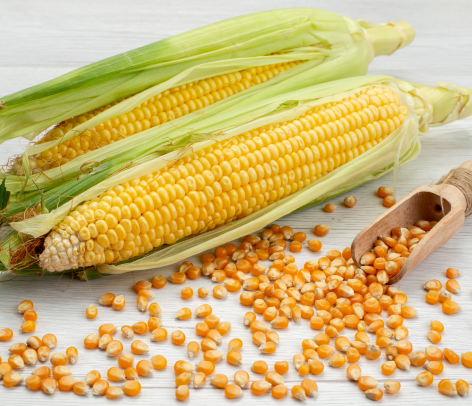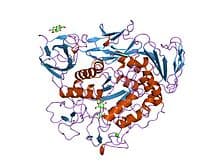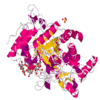


Starch Processing Enzymes Manufacturer
Starch is a polymeric carbohydrate that consists of various glucose units connected by glycosidic bonds. The polysaccharide is produced by most green plants as energy storage. Starch processing is a process of extracting starch from staple food like potatoes, maize (corn), rice, wheat and cassava. In the process, the wet milling of grains is followed by slurry formation. The starch slurry is then spread and dehydrated to extract starch in powder form. This starch then undergoes a liquefaction and saccharification process to obtain various products like Maltodextrins, High purity Maltose, Liquid Glucose, and Dextrose powder.
Ultreze manufactures and supplies the best quality of Gluco Amylase, Beta Amylase, and Alpha-Amylase for starch processing industries across the country. Ultreze starch processing enzymes help manufacturers to easily break down complex starch polymers during the production, allowing them to accelerate production and improve the quality of their products.
Ultreze Enzymes are not only the best manufacturer of starch processing enzymes but is also a leading supplier across India and Gujarat. Our uniquely tailored sugar processing enzymes cost-effectively streamline your production.
Our Processing Flow

Alpha amylase for liquefaction
High temperature alpha-amylase is enzyme developed specifically for the bioenergy sector. thermostable Alpha amylases hydrolyze the starch matter to maltodextrin which contains mainly oligosaccharides and dextrins.

Gluco Amylase for saccharification
glucoamylase enzymes which can hydrolyze starch completely to glucose along with maltose and isomaltose as by-products.

Beta amylase
Beta amylase breaks starch into maltose. It is used for production of maltose syrup.
Enzymes Used for Starch Processing
High Temperature Amylase (Ultreze-HTAA).
A method was investigated for the continuous enzymatic liquefaction of highly concentrated corn starch and the subsequent saccharification to glucose. The method should be easily transferable to commercial fermentation operations because it seems to be quite efficient for the conversion of starch to glucose and enzymatic liquefaction. According to preliminary research, this method can also be used to transform milled corn or other cereal grains.
Glucoamylase (Ultreze-GA)
One of the oldest and most used biocatalysts in the food industry is glutamylase. The procedure entails adding a glucoamylase after liquefaction of a thermally stable, high-temperature alpha amylase to the continuous mixer.
Ultreze-GA, an exo alpha-amylase, hydrolyzes 1-4 alpha glucosidic linkages of liquefied starch under conditions that are favorable for rapid enzymatic hydrolyses. The prolonged activity of Ultreze-GA produced significant amounts of glucose in the food and beverage industries.
Are you looking for enzymes?
We're Here to Assist
Frequently Asked Questions(FAQ)
Alpha Amylase enzyme and Glucoamylase enzyme is involved in starch hydrolysis.
Enzymes in the starch industry are essential for converting starch into sugars, liquefying starch for easier processing, saccharifying starch for fermentation or sweetener production, and modifying starch properties for various applications.
The two major enzymes in starch technology are amylase and glucoamylase. Amylase breaks down starch into smaller units, while glucoamylase hydrolyzes these units into glucose. They are vital for starch conversion and the production of various starch-based products.
